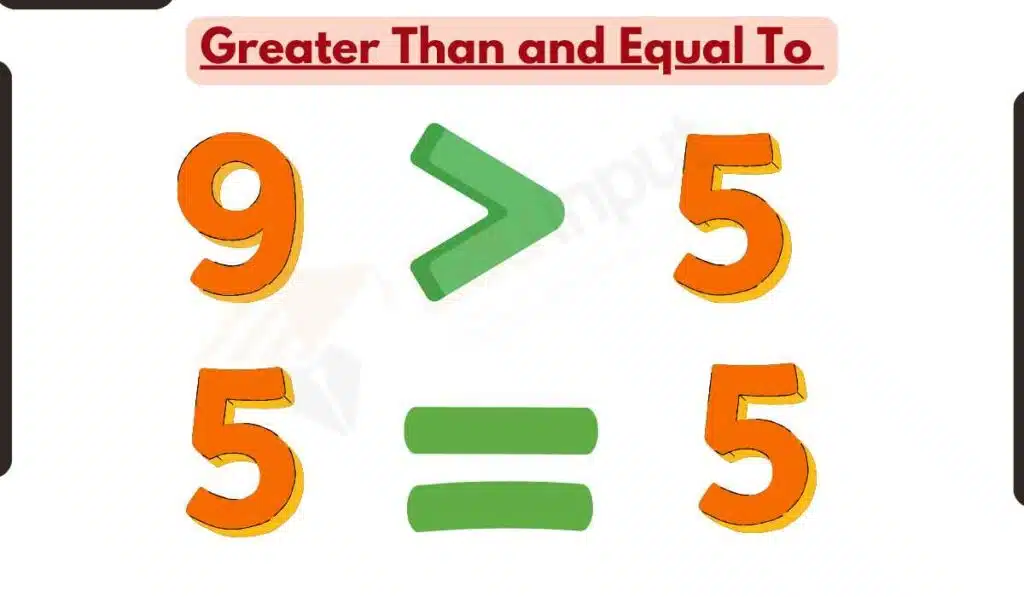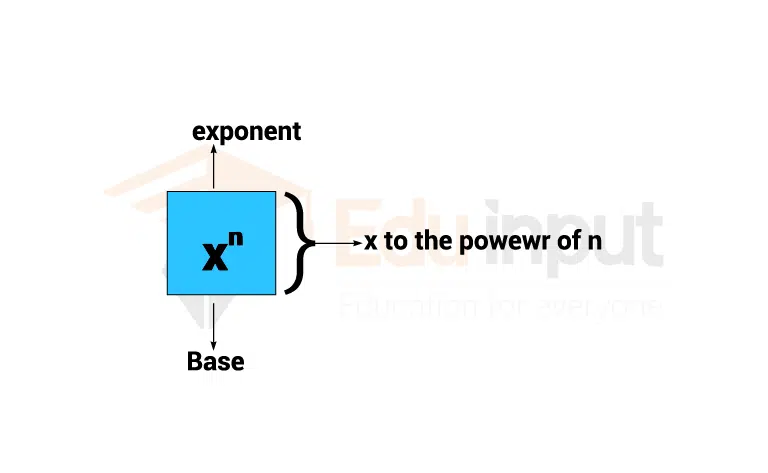Greater Than and Equal To in Math
Mathematics is like a secret code that helps us solve everyday problems. Two important symbols in this mathematical code are greater than (>) and equal to (=).
In this article, we’ll discuss greater than and equal to symbols in easy words, solve some fun math problems, and create a table of numbers that are greater than or equal to each other.

Greater Than (>)
Imagine you have two piles of candy. If one pile has more candies than the other, we say that the first pile is “greater than” the second pile. We use the “>” symbol to show this.
For example, if one pile has 5 candies, and the other has 3 candies, we write it as: 5 > 3.
Equal To (=)
Now, let’s say you have two identical piles of candy, each with 4 candies. We say that they are “equal to” each other because they have the same number of candies. We use the “=” symbol to show this. So, 4 candies = 4 candies.
Examples
Problem: 1
Is 7 greater than 9?
Answer: No, 7 is not greater than 9. So, 7 < 9.
Problem: 2
Are 3 apples equal to 3 bananas?
Answer: Yes, 3 apples are equal to 3 bananas. So, 3 apples = 3 bananas.
Problem: 3
Is 12 greater than or equal to 12?
Answer: Yes, 12 is equal to itself, so 12 = 12. It’s also greater than or equal to itself.
Greater Than and Equal To Table
Now, let’s create a table of some numbers that are greater than or equal to each other:
| Number A | Number B | Relationship |
|---|---|---|
| 5 | 3 | 5 > 3 (Greater than) |
| 4 | 4 | 4 = 4 (Equal to) |
| 10 | 10 | 10 = 10 (Equal to) |
| 8 | 12 | 8 < 12 (Less than) |
| 15 | 15 | 15 = 15 (Equal to) |
| 7 | 9 | 7 < 9 (Less than) |
In this table, you can see how different numbers compare to each other using the “greater than” and “equal to” symbols.
Understanding “greater than” and “equal to” is essential in math. It helps us compare numbers, make decisions, and solve problems in our daily lives.







Leave a Reply